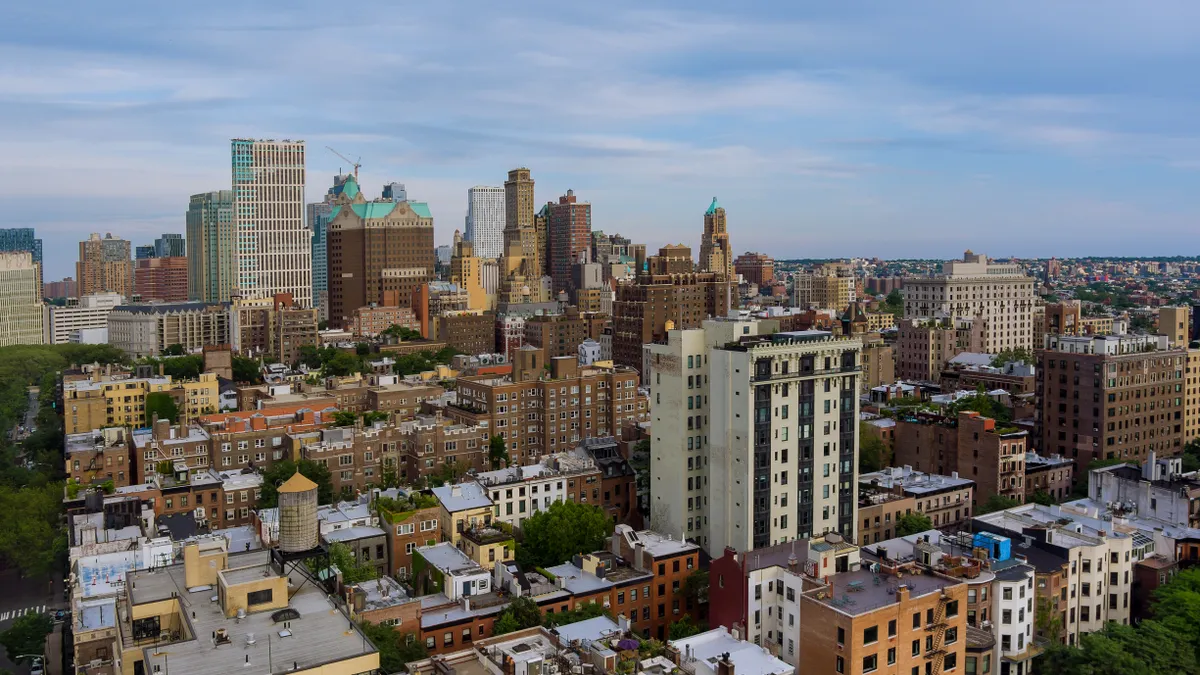Dive Brief:
- Rents are surging, and residents are being displaced in cities with limited housing development, a Pew analysis shows. From 2017 to 2024, rents in the lowest-income ZIP codes had the highest rent increases — as much as 10.3%, according to Pew.
- A 10% increase in a ZIP code’s housing supply correlated with slower rent growth — an average of 1.4% less compared with a ZIP code with no increase in its housing supply, according to a Pew analysis of Zillow data from 2017–2023. The biggest rent declines in metros that have boosted housing supply were in low-income areas.
- “Maintaining restrictive zoning that exacerbates the housing shortage puts vulnerable tenants in a more precarious position by burdening them with steep rent increases,” the Pew analysis states. “Allowing enough homes for everyone improves affordability overall, but the evidence shows it benefits low-income renters most.”
Dive Insight:
Nearly half of renters in the U.S. spend more than 30% of their income on rent and are considered cost-burdened, according to the U.S. Census Bureau.
Rent increases are connected to the shortfall of as many as 7.1 million rental homes for low-income renters. While high-income renters have options in middle-income areas and middle-income renters can relocate to less expensive options, low-income renters have “nowhere to turn,” according to Pew.
The impact is acute in large metros with stifled housing development. New York City, for example, increased its housing stock only 4% between 2010 and 2023 despite a 22% surge in jobs during the same period, forcing people out of the city or onto the streets. The U.S. saw a record amount of homelessness in 2024.
Rents are rising more slowly — and even falling — in cities that have bolstered housing development. Austin, Texas; Denver; San Antonio, Texas; Raleigh, North Carolina; and Dallas all recorded declines in the average rent for low-income renters from 2023 to 2024. These cities have all increased their housing stocks by at least 10% since 2017, according to Pew. Even new luxury or high-end housing developments helped curb rent in low-income areas, the analysis found.
“So even though most of the new apartments and condominiums built were not subsidized and may have had rents higher than low-income residents could afford, the new supply helped push rents down in older, less-expensive units by reducing the competition among those seeking homes that were no longer as scarce,” according to Pew.
New Rochelle, New York, took steps starting 10 years ago to increase housing supply and reduce rent by authorizing more than 11,000 housing units over the past decade, with 4,500 of them completed, according to the Wall Street Journal. Median rent in New Rochelle has increased just 1.6% since 2020, the Wall Street Journal reported.
“Affordable housing is not one-size-fits-all,” New Rochelle Mayor Yadira Ramos-Herbert said in a state of the city address in May. “It’s a wide spectrum that touches many different lived experiences — from mature adults on fixed incomes to young professionals just starting out.”











